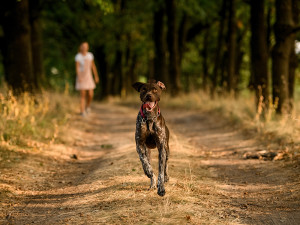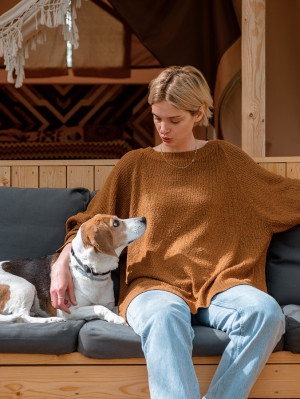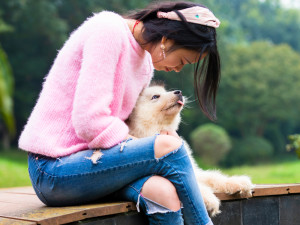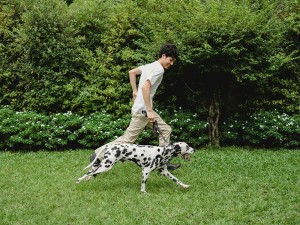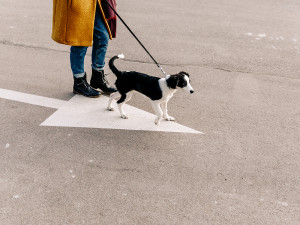Why Does My Dog Run Away From Me?
Upgrading your pup’s recall training from accidental to intentional.
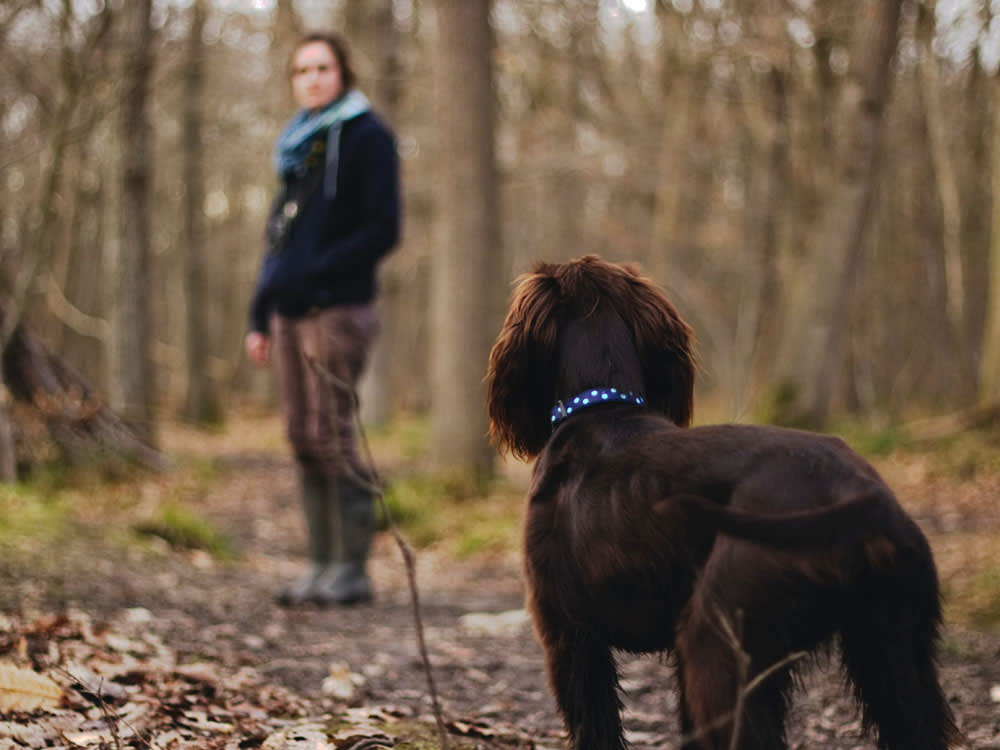
share article

Your pet wants you to read our newsletter. (Then give them a treat.)
Does your dog reliably come in response to a signal like the whirl of a can opener, the sound of a treat drawer or jar being opened, or the word “walk”? When your dog hears cues that promise something they like, they come running — every time and with great enthusiasm. Yet, one of the most common behavioral frustrations that pet parents have is that their dogs won’t come when calledopens in a new tab.
There is a lot to be revealed about dog behavior by situations in which you may have accidentally trained your dogs to have a good recall (meaning they come back to you). If you feel like you’re failing in your efforts — there’s a silver lining here: you can use lessons from these accidental recalls to get your dog to come when you want them to.
Does Your Dog Run Away From You?
Part of the issue is that all too many people expect their dogs to come when called without having trained them to do so. In fact, when people say, “My dog runs away and won't come when called,” the first question I ask is, “Have you trained them to do that?”
The fact is, dogs don’t come into this world ready to respond to the word “come” by trotting to you, much less to do it joyfully or to do it every time. It takes a lot of repetition for dogs to learn what the cueopens in a new tab means and to respond to it as we would like them to. It’s unreasonable to assume that your dog will run to you when you call them — simply because they are a dog, and you are a person, and that’s what you want them to do.
Dogs tend to do things that make them happy. That approach to life — seeking joy — is something we love about them, and it makes sense to take advantage of it in training. Teaching a dog to come to you rather than run away involves developing a strong association between your signal and something good happening for the dog. If your dog learns that coming to you in response to a specific cue leads to good things for them, then they’ll want to come, and will do so consistently.
For example, once your dog figures out that every time you pick up the leash, they go for a walk, they will naturally approach you when you pick up the leash. Similarly, if they learn that the crinkling of a treat bag is a sure sign that treats are in their future, it should come as no surprise that this sound prompts them to run to you as fast as their legs can carry them. The key is that you’re doing something that your dog can rely on to result in a positive experience.
This is a lesson that can be carried over from accidental to purposeful (re)training: make sure that something good happens every single time your dog responds appropriately to the cue.
Negative Associations That Push Your Dog Away
Sometimes, what you “reward” your dog with when they come falls into negativeopens in a new tab territory. When you don’t have a treat because you forgot or didn’t feel like going to get one, you skip that step and give the dog a less-than-thrilling “Good girl, good girl, good girl,” along with a pat on the headopens in a new tab, something most dogs generally dislike.
Or, they may use a treat that the dog isn’t very excited about — regular dog kibble or a dry biscuit instead of something meaty and smelly and really tasty. (By way of analogy, most of us respond differently to spinach, dry crackers, and brownies. I do like spinach and crackers, but of the three, only a brownie is wonderful enough to elevate my mood.)
It’s not unusual for a dog to respond beautifully to being called, only to find that they have left the fun of the yard for the boredom of the house, where they’ll perhaps be alone for hours. People also call their dogs to come for things many dogs consider horrible, such as a bath or a nail trim.
In these cases, “Come!” serves as a warning. (“Thanks for the heads up — I’ll stay away so I don’t have to stop playing and I can avoid whatever misery you have in mind.”) The result is that the dog is not nearly as willing or interested in coming as she would be if her people had trained the response to this cue properly, as so many have done accidentally.
(Re)training Your Dog to Respond
In addition to starting over by training an intentional recall just as you trained the accidental one, you can also transfer the cue. “Transferring a cue” is a technical expression in dog training that means teaching your dog to respond to a new cue by pairing it with one they already know. So, if they always come to you when they hear the sound of a treat bag being opened, you simply say “Come” every time you’re about to open the treat bag, then reinforce them with a treatopens in a new tab when they comply.
Soon, with enough repetitions, your dog will learn that the cue predicts the sound of the treat bag, which predicts treats. Before long, “come” will predict treats in their mind just as the sound of the treat bag does. Then, you can call them to come and reinforce them for doing so without the opening-the-treat-bag sound. The cue has been transferred.
Many recalls are trained without thought, yet they are very effective because the training process followed the rules for teaching a perfect recall. Just because a perfect recall does not happen to be in response to saying, “Come!” doesn’t mean that a dog has not learned this most prized and valuable behavior. Accidental recalls are still recalls. Use them to your advantage.
Here are the key points to keep in mind when training your dog to reliably return to you on cue.
Do:
Make recall training a priority.
Figure out what makes your dog want to come to you.
Consistently pair up the recall cue with your dog’s favorite things, aiming for 100 percent association between the word “come” (or whatever word you use) and something good.
Reinforce with a top-quality item. (The “something good” does not need to be the same each time; in fact, vary it. Sometimes it’s a treat, others a chew toy, a walk, a bone, or something totally unexpected.)
Don’t:
Assume that your dog will come without being trained to do so.
Use your dog’s name as a recall signal; it gives her no real information or direction.
Call your dog to come for anything that she will consider aversive.

Karen B. London, PhD, CAAB, CPDT-KA
Karen B. London, Ph.D., is a Certified Applied Animal Behaviorist and Certified Professional Dog Trainer who specializes in working with dogs with serious behavioral issues, including aggression, and has also trained other animals including cats, birds, snakes, and insects. She writes the animal column for the Arizona Daily Sun and is an Adjunct Professor in the Department of Biological Sciences at Northern Arizona University. She is the author of six books about training and behavior, including her most recent, Treat Everyone Like a Dog: How a Dog Trainer’s World View Can Improve Your Lifeopens in a new tab.
Related articles
![Man running with dalmatian dog on a leash in a backyard with grass]() opens in a new tab
opens in a new tabAn Active Dog Is a Well-Behaved Dog
Why regular exercise can mean a less destructive dog and a happier you.
![Two dogs acting rowdy at the lake while a person tries to calm them down]() opens in a new tab
opens in a new tabMy Dog Is Misbehaving. What Should I Do?
Don’t blame the dog — instead, figure out how to help them succeed.
![Person walking their dog in the street]() opens in a new tab
opens in a new tabWalk With Me—How to Leash Train a Puppy
Don’t let your new dog walk you.
